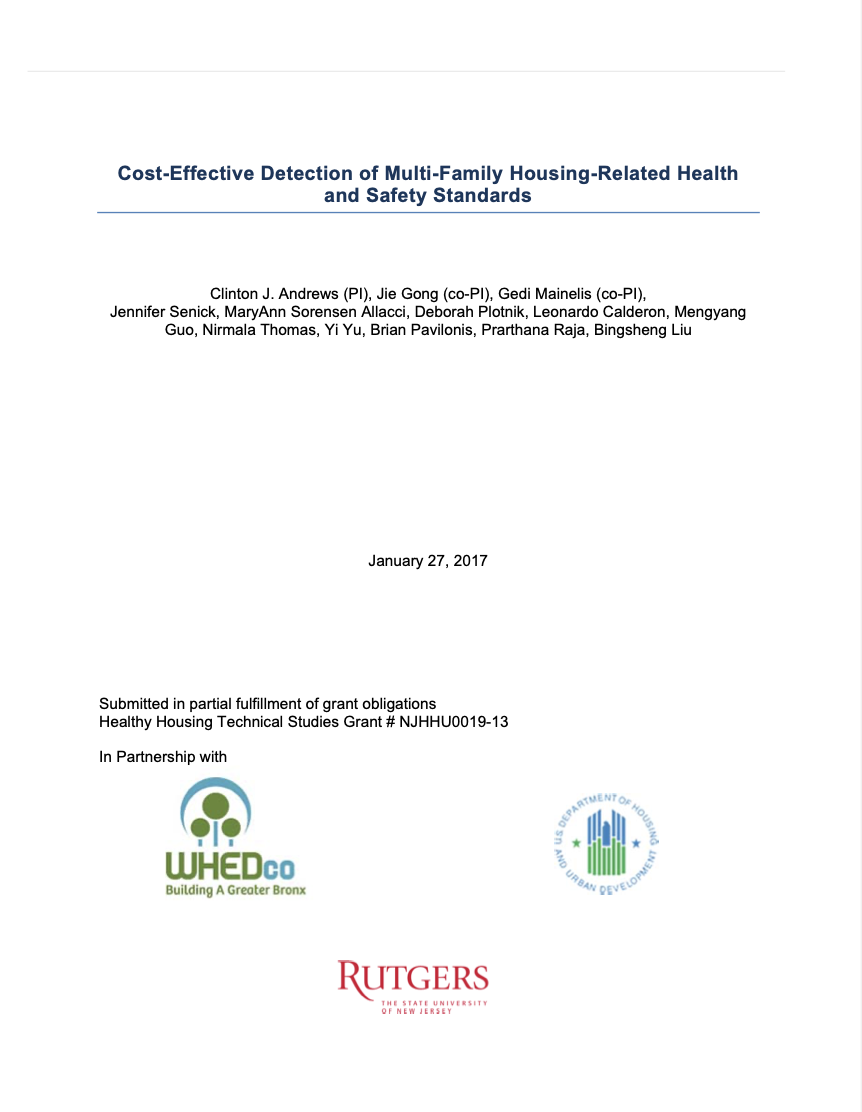This project addresses the need for the development of low-cost test methods and protocols for identification and assessment of housing-related hazards. It develops an approach that applies to the analysis of existing data and the generation of new data to improve knowledge regarding the prevalence and severity of specific hazards in low-income housing. The project also pursues more cost-effective means of informing efforts at integrated pest management, mold and moisture control, and indoor air quality including infiltration of ambient air pollution.
It is estimated that millions of home occupants in the United States are exposed to moderate or even severe health and safety hazards such as roofing and other structural problems, heating and plumbing deficiencies, leaks, and pest problems that are associated with a wide range of health issues from injuries to respiratory illnesses (Joint Center for Housing Studies of Harvard University 2016). Housing-related environmental health hazards may exist in the full range of housing quality conditions, from those structures that are new and / or well-constructed and maintained, to those buildings that lack substantially in many of the basic protections for health and safety. Several types of housing deficiencies can pose both overt and subtle health hazards, particularly in urban communities, where the lowest-income residents living in areas of disinvestment have few options for quality housing and building owners may have limited resources. The structural integrity of buildings, for example, can affect habitability and housing stability and therefore residents’ opportunities to establish a “home base” from which they may raise healthy families, provide for adequate nutrition and education, and participate in health and social networks that help link people to physical and psychological well-being. Other physical deficiencies related to health hazards include inadequate heat and ventilation, concentrations of toxic chemicals in indoor air, and biological agents such as mold conditions, rodents, and roaches that have been linked to asthma exacerbations and other respiratory and cardiac conditions (Jacobs 2011, Reponen, Lockey et al. 2012).
